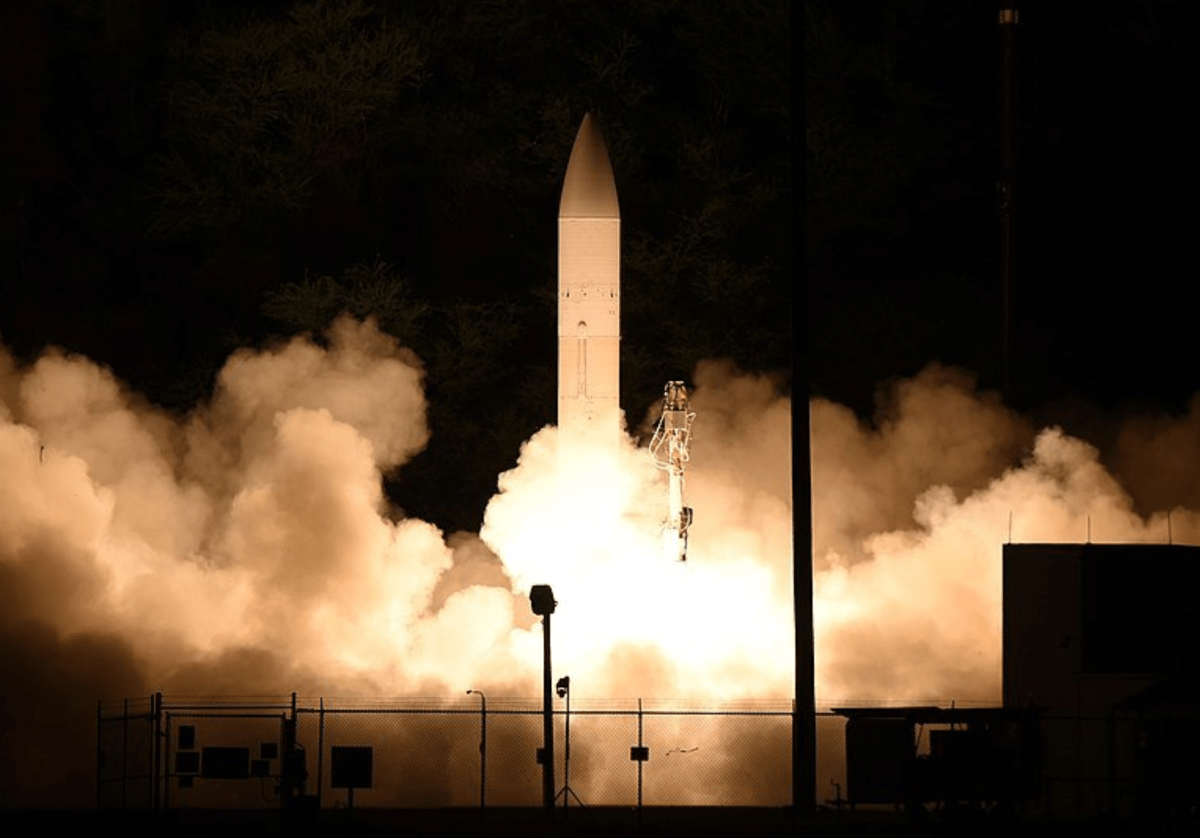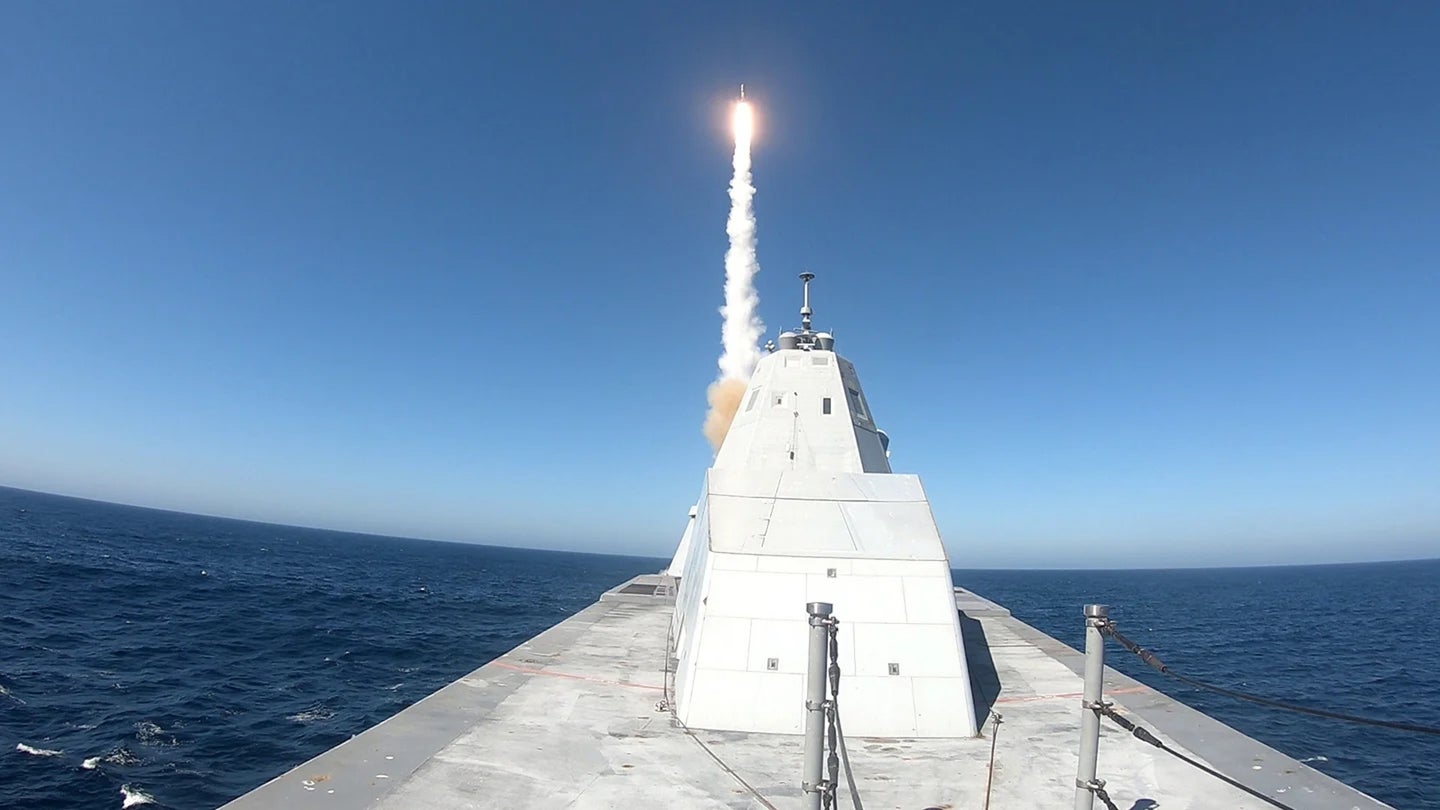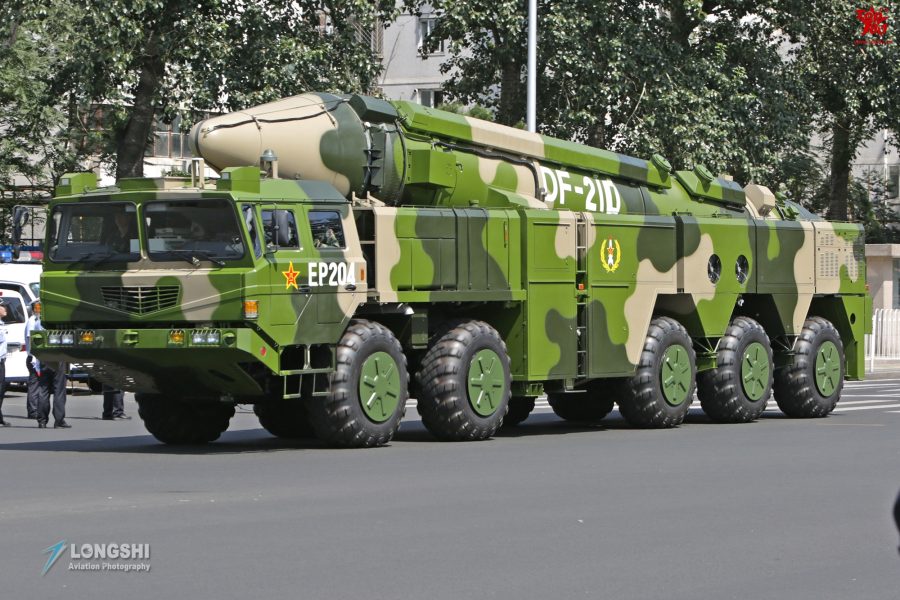Analysis By Parth Satam
With political and economic stakes possibly riding on a defense project that saw a 17% cost overrun from $12 billion to $14 billion and the number of vessels being dropped from 32 to only three, besides a raft of nagging flaws in the overtly advanced system, the USS Zumwalt series of warships will not be scrapped.
Ironically, its signature – and biggest irritant – Advanced Gun System (AGS) will be replaced by another defining weapon of our times – hypersonic missiles.
The two tubes for the Common-Hypersonic Glide (C-HGB), designed for even the Army and the Air Force, were originally planned to be placed on the port and starboard sides of the ship without removing the two 155-mm AGS gun mounts, according to a plan outlined by Chief of Naval Operations (CNO) Admiral Mike Gilday.
Now the entire section of five platforms – two gun rooms, the loading system, transfer carts and ammo – will be removed by October 2023 to accommodate the C-HGB that is significantly larger than any missile in the USN inventory.
The C-HGBs will be fired from a variant of the Multiple All-up Round Canisters (MAC) developed when the Navy converted four Ohio-class nuclear ballistic missile submarines (SSBNs) into guided-missile boats (SSGN). MAC tubes of the SSGNs held Trident-II D5 nuclear ballistic missiles, before being repurposed for seven Tomahawk Land Attack Missiles (TLAM).
The last in the series, USS Lyndon B. Johnson (DDG-1002) reached the Mississippi-based Huntington Ingalls Shipyard in January this year for having their air search radar, Vertical Launch Cells (VLS), Combat System outfitted and tested, after being launched at General Dynamics Bath Iron Works in Maine.
The two others are the USS Zumwalt (DDG-1000) and the USS Michael Monsoor (DDG-1001).
The EurAsian Times had outlined the class’s troubles, ranging from its trademark “tumblehome” hull feared to be unstable with the possibility of tipping over if a wave hits the ship under the right sea conditions, the right angle, and the right speed. The first-of-its-kind Integrated Power System (IPS) has problems with its software, causing several operational issues.

The radar-evading structure – stealth no doubt – has been still been found to be vulnerable to, ironically, lower-frequency S-band radars.
If not an old-school radar system, technologically proficient militaries with sufficiently networked assets, battlefield management systems, sensor fusion, and data sharing can eventually find a roundabout, complicated tricks to detect stealth.
The AGS, meanwhile, fired the $800,000-a piece rocket-assisted Long Range Land Attack projectile that the navy thankfully found to be a criminal waste and dropped it in 2016. Most astonishingly, the ship lacks a Close-In Weapons System (CIWS), that can protect it from salvos of anti-ship missiles.
Even the 57-mm Mark-110 cannons that were originally planned on the Zumwalt had only limited CIWS capability, without the reliability of the 20 mm Phalanx Gatling gun or the Rolling Airframe Missile and SeaRAM point Missile Defence Systems.
The cannons were dropped from the Zumwalt’s basic design in 2014 to not add to its radar signature! Since it does not have Aegis radar and fire control systems, it can’t offer a “layered air defense” to fire the Anti-Satellite (ASAT) and Ballistic Missile Defence (BMD) capable Standard Missile 2/3/6 surface-to-air missiles.
All it has is the RIM-162 Evolved Sea Sparrow Missile, which can’t fly longer than 30 miles. Worse, even it was downgraded with the smaller SPY-3 radar systems in place of the SPY-4 to save costs, which impeded its basic air defense capability. This led to SPY-3 merely being updated with new software to perform both surveillance and tracking roles.

The Navy, therefore, in 2017 finally decided to convert the Zumwalts from littoral and shallow waters capable land-attack amphibious support vessels to blue-water strike platforms.
This is a common story with all the recent glamorous legacy platforms, including the F-22 Raptor, F-35 Lighting II, Gerald R. Ford-class aircraft carriers, and the Freedom and Independence-class Littoral Combat Ships (LCSs), a result of the American capitalist political economy borne out of its privatized Military-Industrial Complex (MIC).

Glamour Vs Utility
Saddled with unusable weapons that rather erode military capability before Russia and China, as pointed out by US’ own military leaders, serves as a lesson for India where some quarters have long called for getting rid of the state-run Defence Public Sector Undertaking (PSUs).
The respective government-run arms industry of the two primary adversaries of America has delivered relevant yet revolutionary combat platforms (hypersonics, Anti-Access/Area Denial missiles, Directed Energy Weapons), ensuring relevance in conventional wars, rendering each of the above weapons useless.
They simply took advantage of the US military getting used to bombing and overkilling vastly inferior non-state actors and armies.

China’s YJ-18 and YJ-12 supersonic anti-ship cruise missiles (range 540 km) and the PL-15 beyond visual range air-to-air missile (300 km), outrange the US’ subsonic 240-km range Harpoons and the 161-km AIM 190D.
Their pride and joy, the “carrier killer” DF-21D missile (range 1,500 km), follows a ballistic trajectory like a nuclear missile re-entering the atmosphere to release re-entry vehicle/s that would propel down on US flattops.
“We are at a disadvantage with regard to China today in the sense that China has ground-based ballistic missiles that threaten our basing in the Western Pacific and our ships,” former US Pacific Command (PACOM, now INDOPACOM) commander Admiral Harry Harris, said in testimony before the US Senate Armed Services Committee in March 2018.
In mid-August, US Strategic Command Chief Admiral Charles Richard agreed in a symposium about current US space and ground-based sensors being incapable of tracking these missiles.
- Parth Satam is a journalist who has been covering India’s defense sector for more than a decade. Twitter: @ParthSatam.
- Follow EurAsian Times on Google News




